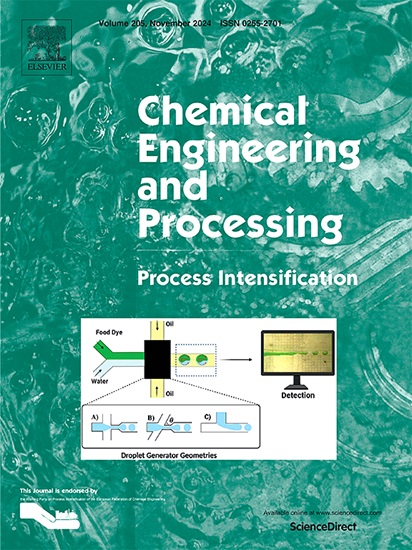AI-aided process intensification of structures
IF 3.8
3区 工程技术
Q3 ENERGY & FUELS
Chemical Engineering and Processing - Process Intensification
Pub Date : 2025-06-27
DOI:10.1016/j.cep.2025.110406
引用次数: 0
Abstract
Process intensification achieved through novel structural designs plays a crucial role in this field. The integration of artificial intelligence (AI) with computational fluid dynamics (CFD) and advanced manufacturing represents a paradigm shift in structural process intensification (PI), transforming it from an art into a systematic science of discovering optimal geometric configurations. Recently, many works have been published in AI-aided structural design, however, a systematic review is still lacking. This review examines the transformation, highlighting how AI-driven approaches enable rapid exploration of high-dimensional design spaces by providing fast predictive capabilities and efficiently guiding the search toward optimal solutions that would be difficult to identify using conventional methods. Key applications include reactors, heat exchangers, and mixers, where geometry plays a critical role in performance. Studies show that AI-assisted design can reduce development time compared to traditional methods while achieving comparable or superior performance metrics. However, challenges remain in constraints in manufacturing complex geometries, scale effects, and computationally intensive simulations. Despite these challenges, AI methods have demonstrated significant potential in accelerating the initial design phase and identifying promising structural configurations that can be further refined. This review provides a critical assessment of current achievements, challenges, and future directions in this rapidly evolving field.

人工智能辅助结构过程强化
通过新颖的结构设计实现的过程强化在这一领域起着至关重要的作用。人工智能(AI)与计算流体动力学(CFD)和先进制造的集成代表了结构过程强化(PI)的范式转变,将其从一门艺术转变为发现最佳几何构型的系统科学。近年来,在人工智能辅助结构设计方面发表了许多研究成果,但仍缺乏系统的综述。本文回顾了这一转变,强调了人工智能驱动的方法如何通过提供快速预测能力和有效地指导寻找传统方法难以识别的最佳解决方案,从而实现对高维设计空间的快速探索。关键应用包括反应器,热交换器和混合器,其中几何形状在性能中起着关键作用。研究表明,与传统方法相比,人工智能辅助设计可以缩短开发时间,同时实现相当或更高的性能指标。然而,在制造复杂几何形状、规模效应和计算密集型模拟方面的限制仍然存在挑战。尽管存在这些挑战,人工智能方法在加速初始设计阶段和确定有前途的结构配置方面已经显示出巨大的潜力,这些结构配置可以进一步改进。这篇综述对这一快速发展领域的当前成就、挑战和未来方向进行了批判性评估。
本文章由计算机程序翻译,如有差异,请以英文原文为准。
求助全文
约1分钟内获得全文
求助全文
来源期刊
CiteScore
7.80
自引率
9.30%
发文量
408
审稿时长
49 days
期刊介绍:
Chemical Engineering and Processing: Process Intensification is intended for practicing researchers in industry and academia, working in the field of Process Engineering and related to the subject of Process Intensification.Articles published in the Journal demonstrate how novel discoveries, developments and theories in the field of Process Engineering and in particular Process Intensification may be used for analysis and design of innovative equipment and processing methods with substantially improved sustainability, efficiency and environmental performance.

 求助内容:
求助内容: 应助结果提醒方式:
应助结果提醒方式:


